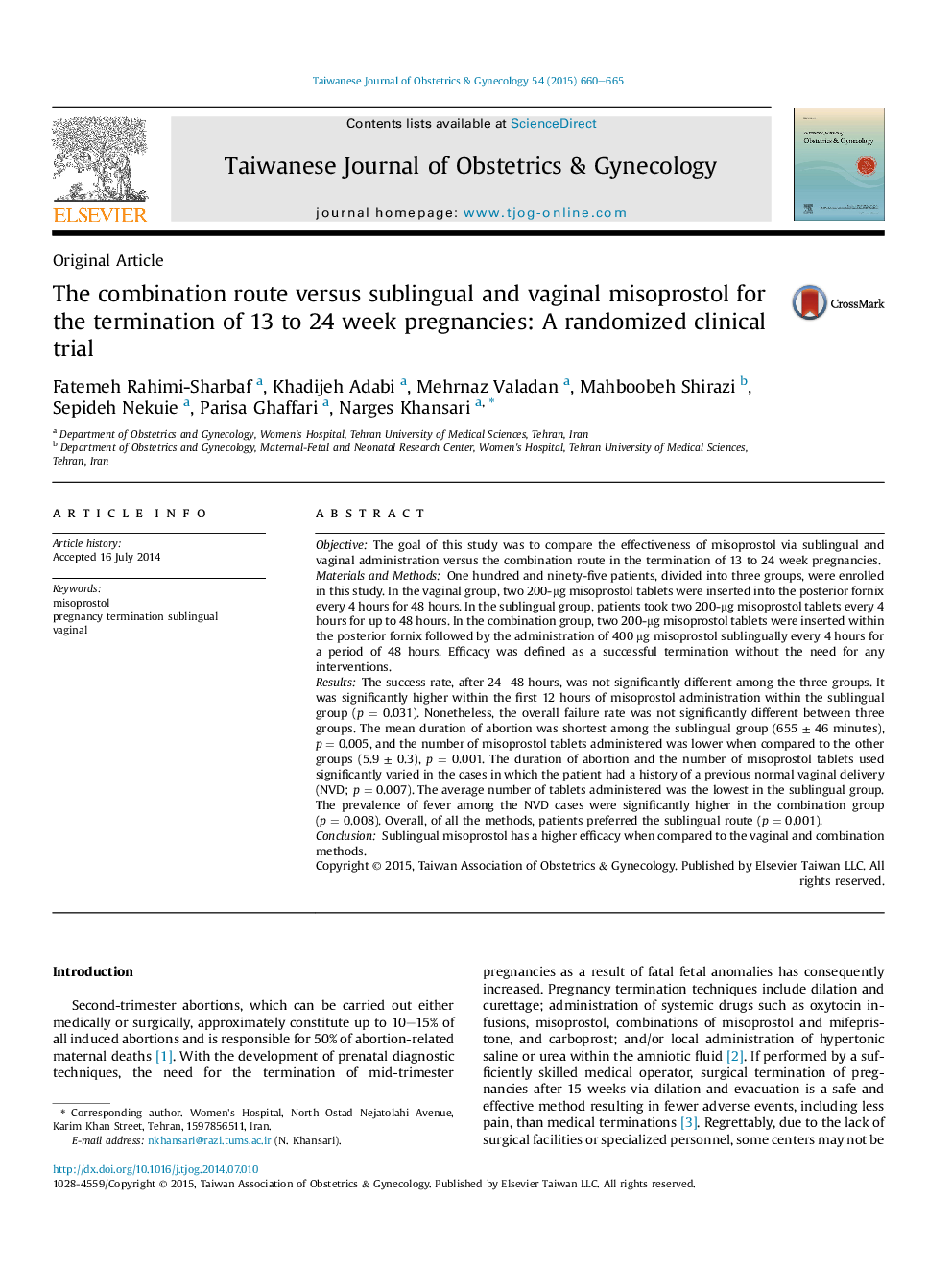| Article ID | Journal | Published Year | Pages | File Type |
|---|---|---|---|---|
| 3975233 | Taiwanese Journal of Obstetrics and Gynecology | 2015 | 6 Pages |
ObjectiveThe goal of this study was to compare the effectiveness of misoprostol via sublingual and vaginal administration versus the combination route in the termination of 13 to 24 week pregnancies.Materials and MethodsOne hundred and ninety-five patients, divided into three groups, were enrolled in this study. In the vaginal group, two 200-μg misoprostol tablets were inserted into the posterior fornix every 4 hours for 48 hours. In the sublingual group, patients took two 200-μg misoprostol tablets every 4 hours for up to 48 hours. In the combination group, two 200-μg misoprostol tablets were inserted within the posterior fornix followed by the administration of 400 μg misoprostol sublingually every 4 hours for a period of 48 hours. Efficacy was defined as a successful termination without the need for any interventions.ResultsThe success rate, after 24–48 hours, was not significantly different among the three groups. It was significantly higher within the first 12 hours of misoprostol administration within the sublingual group (p = 0.031). Nonetheless, the overall failure rate was not significantly different between three groups. The mean duration of abortion was shortest among the sublingual group (655 ± 46 minutes), p = 0.005, and the number of misoprostol tablets administered was lower when compared to the other groups (5.9 ± 0.3), p = 0.001. The duration of abortion and the number of misoprostol tablets used significantly varied in the cases in which the patient had a history of a previous normal vaginal delivery (NVD; p = 0.007). The average number of tablets administered was the lowest in the sublingual group. The prevalence of fever among the NVD cases were significantly higher in the combination group (p = 0.008). Overall, of all the methods, patients preferred the sublingual route (p = 0.001).ConclusionSublingual misoprostol has a higher efficacy when compared to the vaginal and combination methods.
